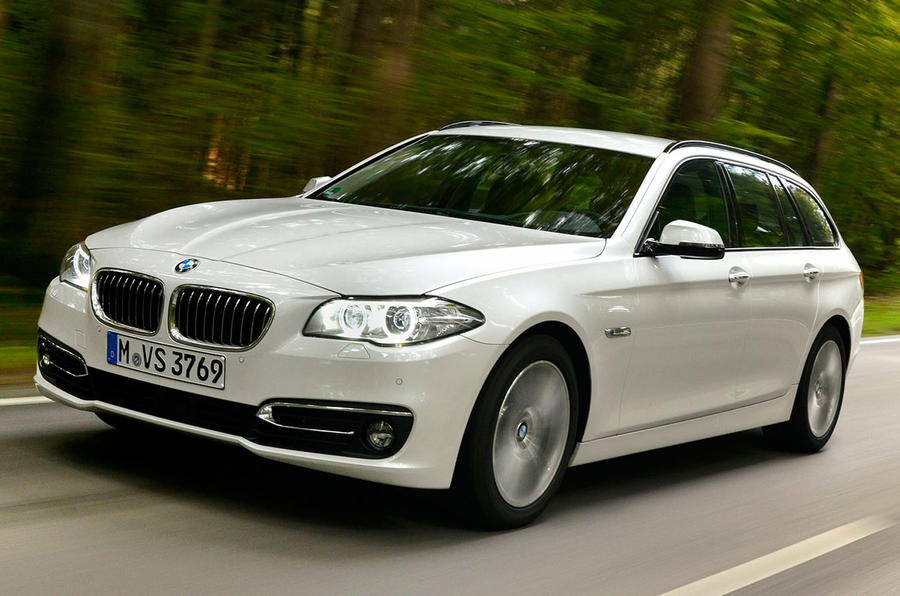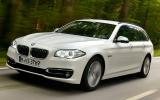What is it?
A slightly faster, more economical and further refined version of one of the UK’s best-selling executive class estates – the BMW 520d Touring.
Having undergone a mid-life facelift last year with a number of mild exterior and interior styling tweaks, Munich’s popular mid-range model has now received a new four-cylinder diesel engine in a move that further enhances its standing against rivals including the newly facelifted Audi A6 2.0 TDI, Jaguar XF 2.2D and Mercedes-Benz E220 Bluetec.
The B48-designated unit is the same longitudinally mounted 2.0-litre common rail unit unveiled in the facelifted X3 xDrive20d back in April. In the 520d, it delivers 187bhp at 4000rpm and 295lb ft of torque on a band of revs between 1750 and 2500rpm.
This gives it a slight 6bhp and 15lb ft increase over the old N47 engine, with which the 520d’s new engine shares its 90.0mm bore and 84.0mm stroke measurements. Despite the apparent similarities, though, BMW claims the B48 is new from the ground up.
Key among its developments is a new Bosch injection system. It operates at a higher pressure than previous incarnations, reaching peak values of up to 2000bar or some 200bar higher than before. It also receives injector nozzles with seven holes for improved combustion properties.
The new BMW engine also adopts a new variable geometry Honeywell turbocharger that is claimed to bring a 50 per cent reduction in frictional losses due to new bearings. There is also a more efficient electrically operated oil pump that brings reduced pumping losses compared with the older N47 engine.
As before, buyers can mate the 520d’s new engine to a standard six-speed manual or optional eight speed automatic gearbox – the latter running a heavily over driven 0.64:1 top gear in combination with a 3.1:1 final drive ratio and a range of fuel saving features that underpin BMW’s EffientDyanmics initiative.
Alongside standard rear-wheel drive, BMW also offers the 520d with optional xDrive four-wheel drive. Beware, though. Despite its traction enhancing qualities, it adds 105kg to 1735kg kerb weight of the standard rear-wheel drive 520d Touring driven here, taking it to 1840kg.
For those on a tighter budget, BMW has also launched a reworked version of the 518d in both saloon and Touring bodystyles. It receives a slightly detuned version of the B47 engine with 148bhp at 4000rp and 265lb ft between 1750 and 2500rpm.





Add your comment
It's the B47
Got to agree with Will86...
What's the problem with a 4 pot?